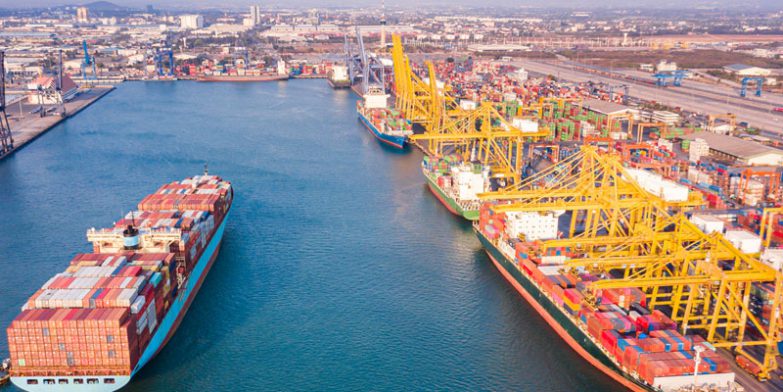
It is inevitable that we will continue to see supply-chain disruptions this year, though they should be far less profound than the global turmoil occasioned by the COVID pandemic and the key again will be flexibility and resilient supply-chains.
The impact of COVID took everyone by surprise in 2020 and as populations faced lockdowns and businesses shuttered, supply lines were initially paralysed, as planes were grounded and shipping lines withdrew capacity.
The global demand spike for PPE, was followed by increased – and sustained – consumer demand, following the end of the pandemic’s most severe period and the supply/demand imbalance in freight capacity persisted until the final quarter of last year.
The war in Ukraine is approaching its second year and the surging energy prices it triggered have contributed to rising interests rates, rampant inflation and recession in Europe, which softened post-pandemic consumer demand.
Some 28% of the current container shipping fleet capacity is on order, as new vessels and just under half of that is due to be delivered over the course of next year. And while shipping lines try to defer delivery of their new tonnage, excess capacity is likely – unless the lines undertake unparalleled blanking programmes.
The labour disputes that were so prevalent last year, as workers sought pay increases to keep up with inflation, with strikes in the U.S, UK, Germany, South Africa and South Korea, are likely to crop up again.
China’s release from lockdowns at the end of 2022 was welcome, but excessive inflections will impact supply chain operations and may trigger elements of the zero-COVID policy, which would cause more problems and increase congestion.
Even with these challenges, things are getting better.
Sea-Intelligence is reporting that about half of all shipping congestion has been resolved, and that – providing there is no ‘Black Swan’ event – a full reversal to normality should come by March 2023.
Many manufacturers are anticipating capability to return to pre-pandemic production volumes in 2023, at levels that flatten the 2020–22 “spikes” seen in almost every aspect of industrial activity, from inventories to production to pricing.
Despite the lack of the traditional peak season, there has been a return to seasonality in shipping and it is reassuring to see volume changes, that were typical pre-pandemic.
Lower demand will allow global supply chains to progressively improve, even if some bottlenecks remain in some regions.
Normalisation in supply chains will not be a leap backwards in time. The pandemic’s disruptions and the evolutions to deal with them have been too profound.
It will also be interesting to see how carriers react and what strategies they will adopt with restricting capacity and schedules.
We will continue to adapt our services and innovate our solutions, because we know that supply chains need to flex to a constantly changing environment.
Global Forwarding group offices in China and across Asia maintain strong relationships with regional carriers and manufacturers. They use their local knowledge to ensure that our customers know exactly what is happening with their orders and can expedite upcoming shipments, for fastest lead times.
Our daily shipping reports simplify supply chain management, by detailing shipments in progress – with the most accurate information available – so that you can manage product flows and maintain supply chain efficiency.





